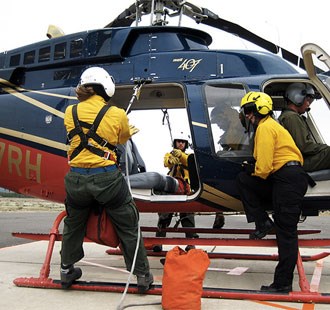
NPS Photo
The NPS Aviation Program is responsible for developing servicewide policy related to aviation operational procedures, equipment, personnel qualifications, and safety standards for the Service. These policies are in addition to those required by the Department of the Interior and the Federal Aviation Administration (FAA). The requirements are communicated appropriately and implemented by managers and employees at all levels.
The Aviation Program in the National Park Service includes some of the most complex operations in the Department of the Interior. We understand that errors committed in one area can often have an effect on another. In the NPS aviation environment of managing safety risks to acceptable levels, it is critical that all aviation disciplines communicate with and learn from each other. Communicating aviation safety is an important step toward improving safety of the entire National Park Service.
Because aviation activities have inherent risks, important aspects of the aviation program include risk management, leadership, accountability, and the development of a culture of aviation safety throughout the Service. Managers and supervisors must provide oversight to ensure that these needs and requirements are met to minimize the risks associated with performing these operations.
“Safety culture” is a term used to identify an overall approach to managing safety within an organization. Safety culture is an attitude or way of life that is practiced in all endeavors. It is what drives us to look at every situation in terms of management-established standards for safety, weighing the risks and making a quality decision based on the information. A key component of efforts to establish a safety culture within NPS is information sharing:
Last updated: July 19, 2016
